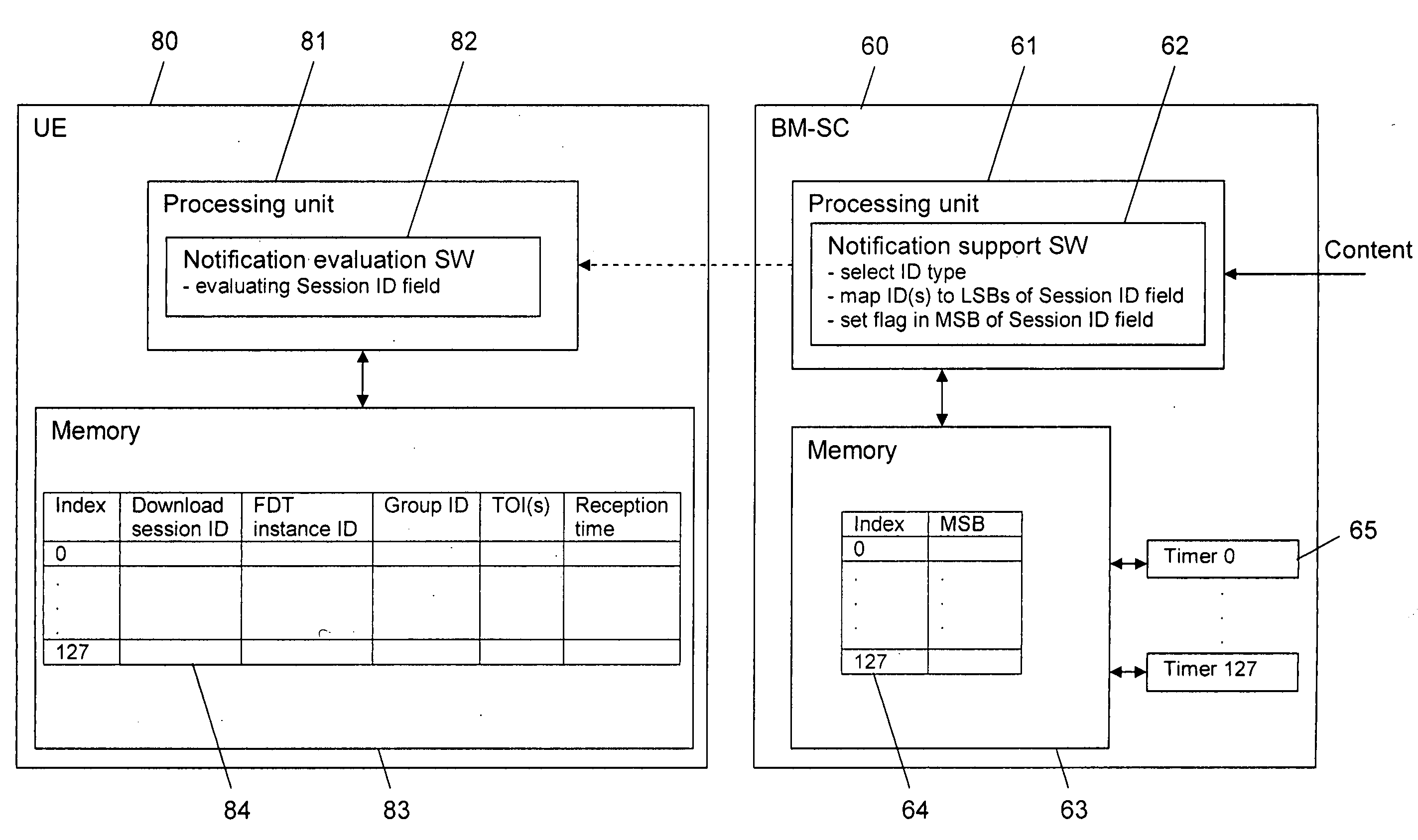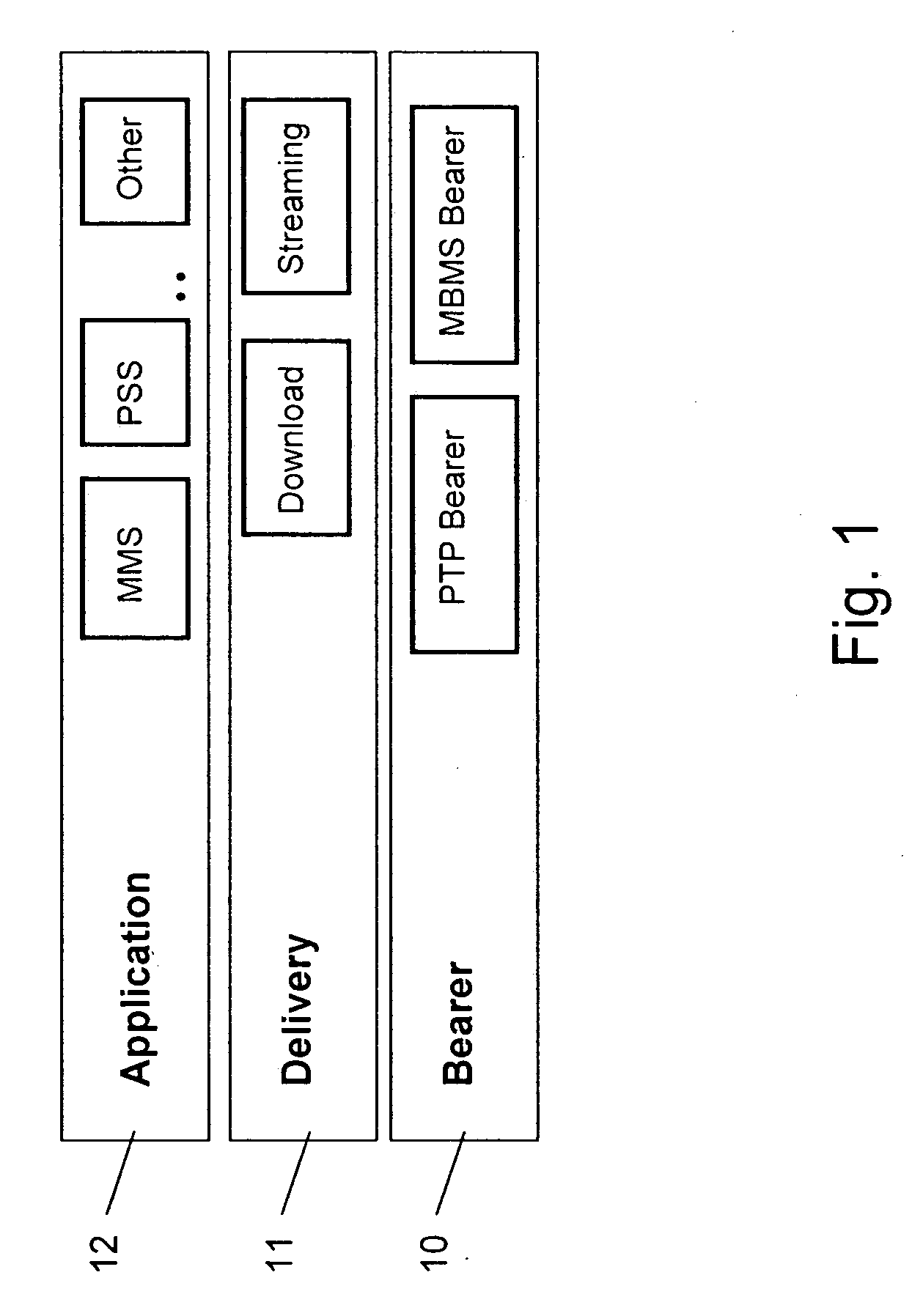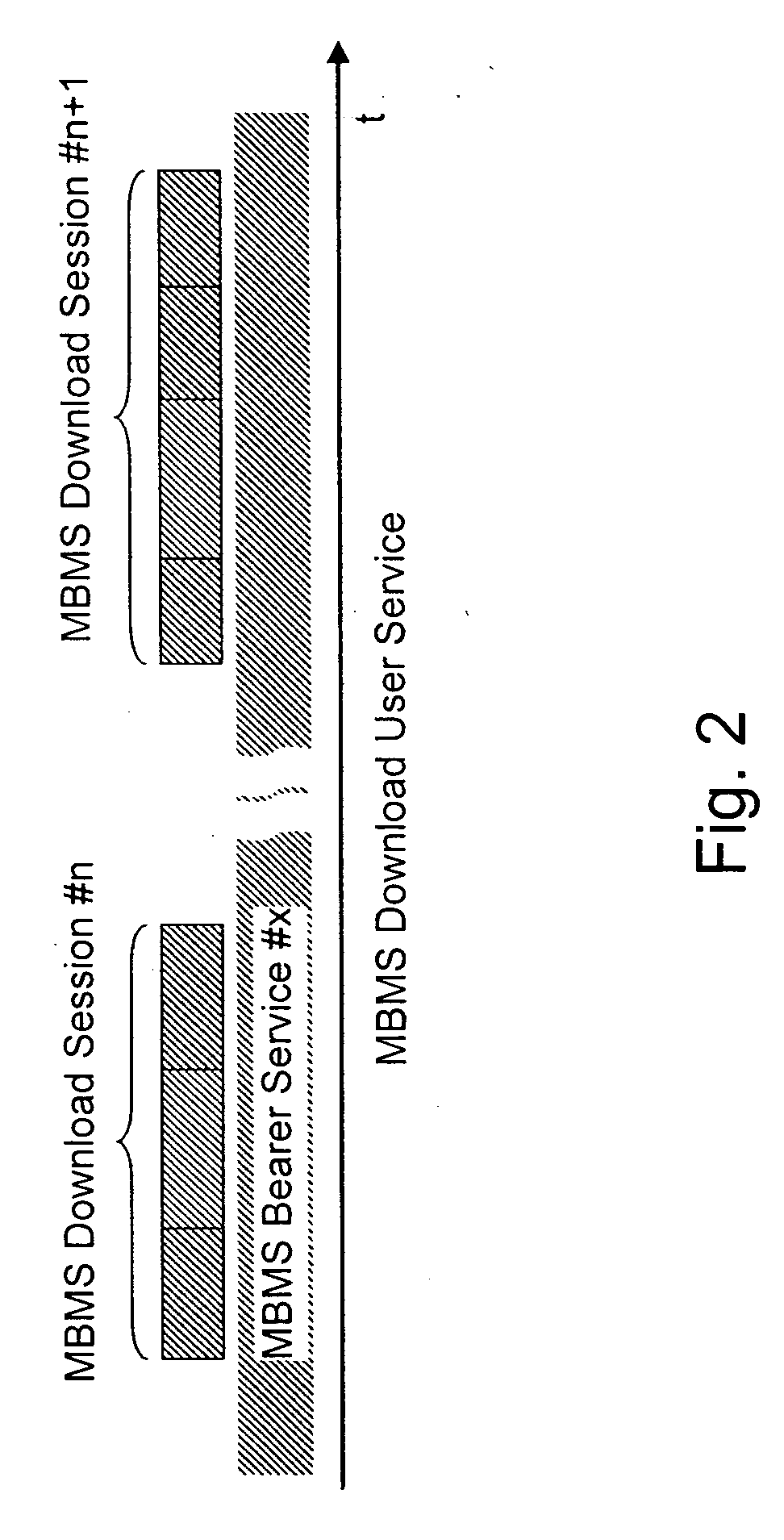Notification of a Receiving Device About a Forthcoming Transmission Session
a receiving device and transmission session technology, applied in broadcast transmission systems, special service provision for substations, broadcast service distribution, etc., can solve the problems of bm-sc difficulty in getting an accurate estimate of timer, inability to directly map the id of the larger download session and the smaller mbms session id without loss of precision, etc., to avoid maintenance, estimation and signaling of validity timers, and improve the handling of ambiguity. , the effect o
- Summary
- Abstract
- Description
- Claims
- Application Information
AI Technical Summary
Benefits of technology
Problems solved by technology
Method used
Image
Examples
Embodiment Construction
[0074]FIG. 4 is a schematic diagram of an exemplary communication system, in which a notification of user equipment about a forthcoming MBMS session can be implemented in accordance with the invention.
[0075]The communication system comprises a mobile communication network including a core network 40 and a plurality of radio access networks (RAN) 44, of which only one is depicted. Each RAN 44 serves mobile terminals 80, that is, user equipment UE, in one or more radio cells in a conventional manner. In the case of UMTS, for example, the RAN 44 may comprise to this end a plurality of RNCs and connected to each RNC a plurality of NodeBs, and in the case of GSM, for example, the RAN 44 may comprise to this end a plurality of BSCs and connected to each BSC a plurality of BTSs. The core network comprises a plurality of SGSNs (Serving GPRS Support Node) 41, of which only one is depicted, a GGSN 42 and a BM-SC 60. A content server 46 of an MBMS user service provider may be connected to the ...
PUM
 Login to View More
Login to View More Abstract
Description
Claims
Application Information
 Login to View More
Login to View More - R&D
- Intellectual Property
- Life Sciences
- Materials
- Tech Scout
- Unparalleled Data Quality
- Higher Quality Content
- 60% Fewer Hallucinations
Browse by: Latest US Patents, China's latest patents, Technical Efficacy Thesaurus, Application Domain, Technology Topic, Popular Technical Reports.
© 2025 PatSnap. All rights reserved.Legal|Privacy policy|Modern Slavery Act Transparency Statement|Sitemap|About US| Contact US: help@patsnap.com



